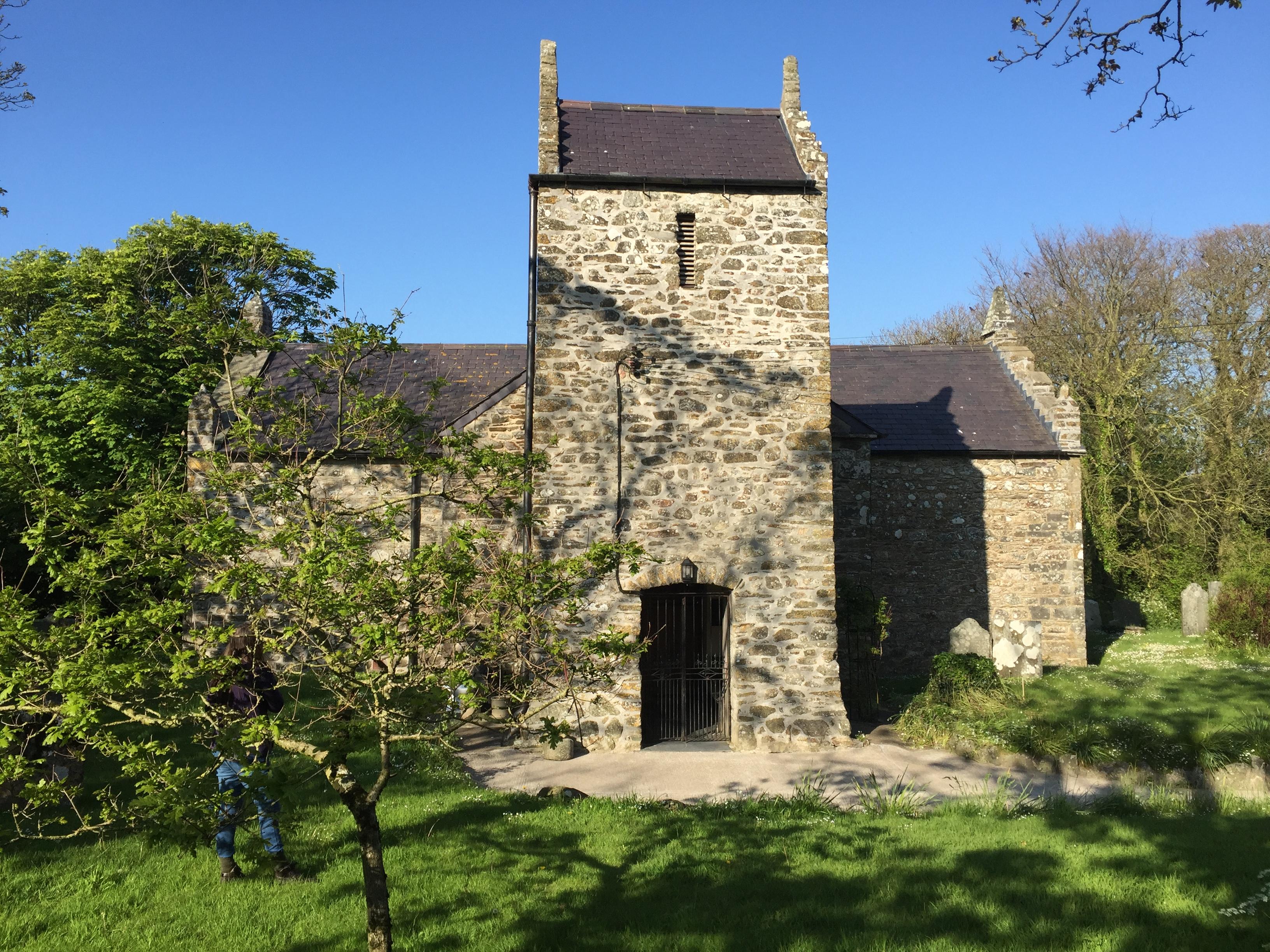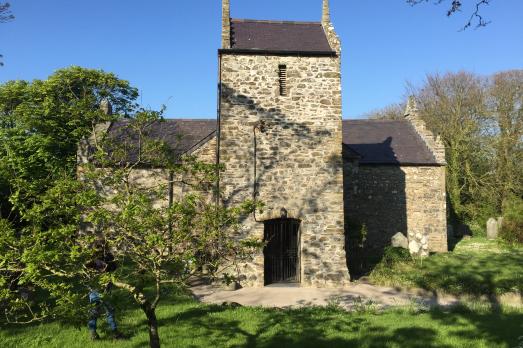There has been a church on this site for 1500 years. In those early days this locality, Dewisland, was one of the most thickly populated areas of the country, and lay at the heart of the Celtic world, which included not only Wales, Ireland and Scotland, but also Cornwall and Cumberland and Brittany. It would have been surrounded by an earthen rampart and containing several beehive shaped huts of wattle and daub, but no more can be told for certain. Later this must have been replaced by a wooden structure, and finally by a stone church.
The church’s tower is of particular interest. It is the oldest part of the present building and is believed to date from the 13th century. It was probably originally built separately as a coastal watch tower and place of defence; the walls are almost 3 feet thick, and a yard inside. Interesting features are the saddleback form and the battlemented finish, while the western gable is stepped according to a style more common in Northern Europe than in Britain.
The font is ancient and is panelled in typical fifteenth century style. The decagonal form is unusual. Each of the panels contains an inverted shield and on one there is the coat of arms of Sir Rhys ap Thomas. It has been suggested that since geologists have declared that the type of stone of which the font is made is not to be found in Britain, but bears a resemblance to that of Solomon’s Temple, Sir Rhys brought it from Jerusalem to Carmarthen where he is buried, and that it was later presented to Llanrhian Church by the Archdeacon of Carmarthen who was also Rector of the parish and Patron of the Benefice.
The present pulpit, lectern and altar were all been added in the 20th century.


